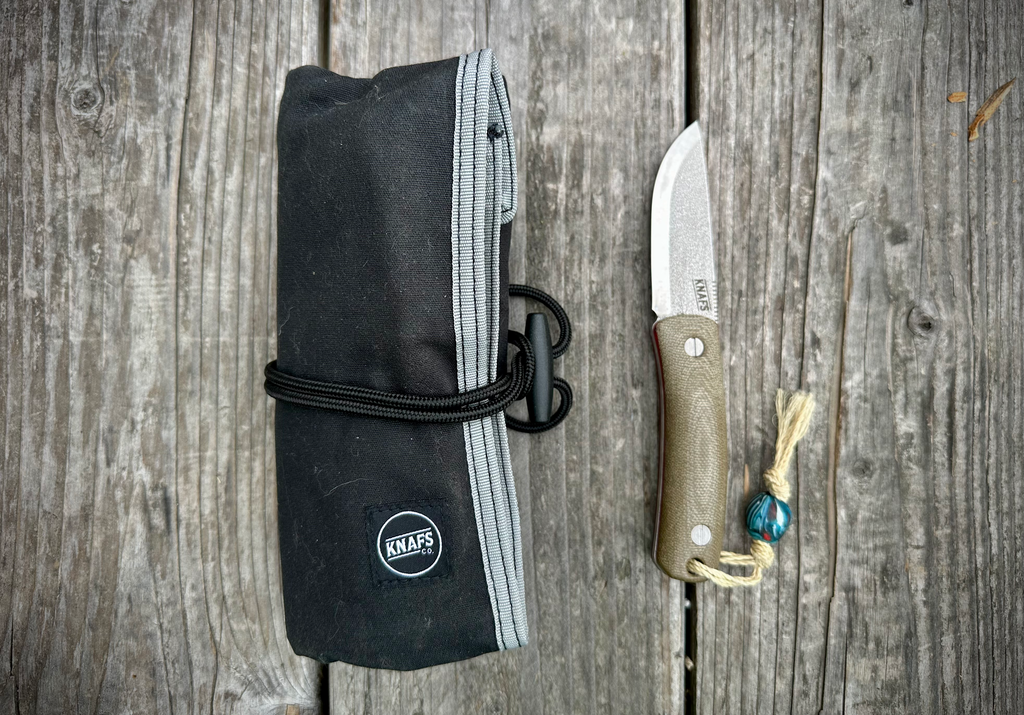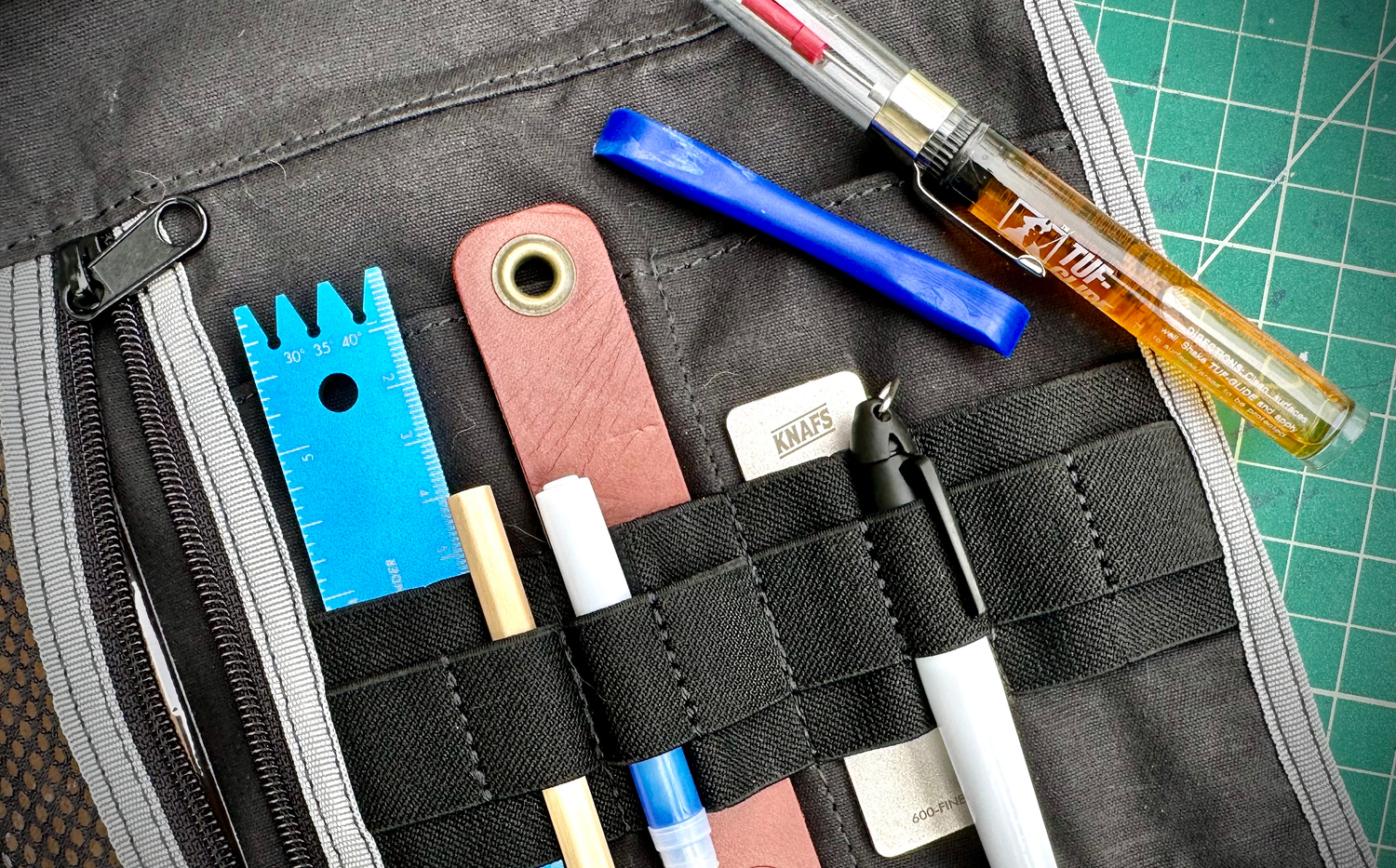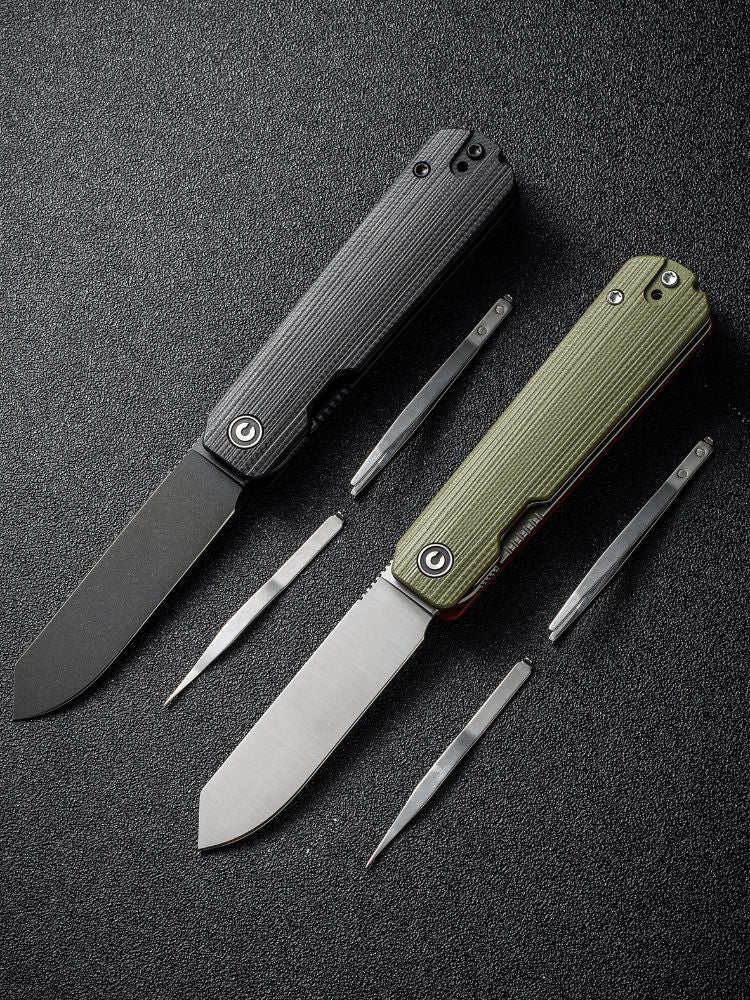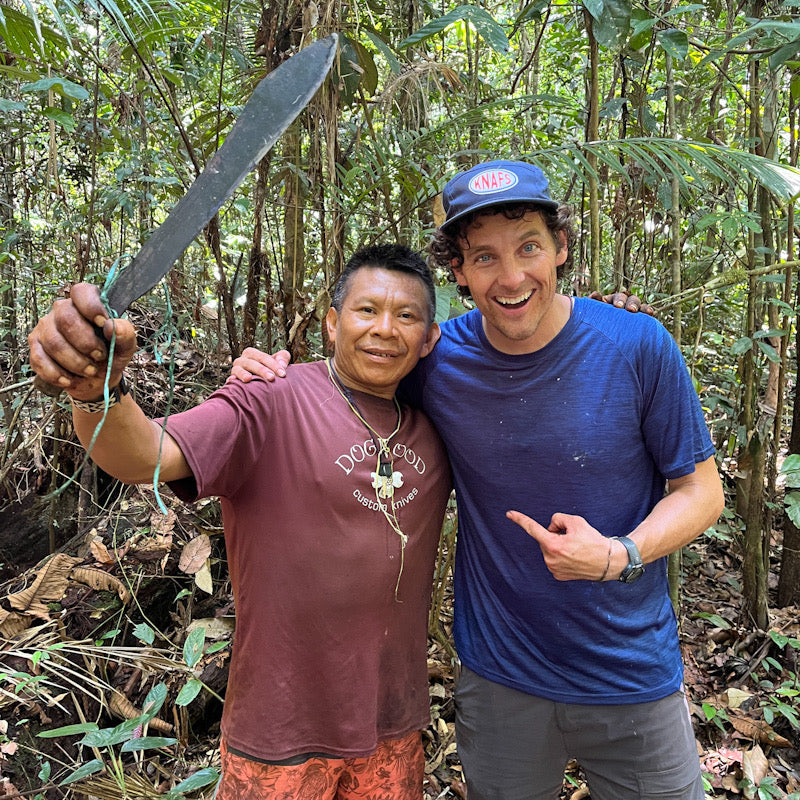
Chances are, if you’re reading this, you carry a pocket knife. If you don’t, don’t worry - Knafs has plenty for you to choose from. That said, your everyday carry (EDC) knife can be a very valuable tool in your day-to-day life. However, if you’re not maintaining it, you may find yourself in a situation where you need it and it won’t perform as expected.
Now, I’m not just talking about making sure the blade of your knife is sharp. Yes, that’s wicked important, but it’s one of a few simple things you can do to keep that EDC in tip-top shape. Where fixed-blade knives require very little maintenance due to their lack of moving parts, folding knives require a little more TLC to keep on keeping on.
Manufacturer’s Recommendations
Before we dive into it, I think it’s important to state that if a knife manufacturer sends you any type of support documentation with their knife - read it. Know it. Do what it says!
With the wide variety of blade steels, hardware, and other materials being baked into knives these days, if the manufacturer is recommending you care for their knife in a particular way, they’re doing it to prolong the life of their product. They want that knife to be a reliable tool for you for years to come. And you want it to, too.

Start With The Right Knife
Picking the knife that’s right for you isn’t as daunting as it may seem. You just need to consider what you’re going to be doing with it and then take the leap. A good place to start is by finding a knife with a blade that has good corrosion resistance, a strong lock mechanism, and handle materials that provide both advanced ergonomics and excellent grip in all conditions.
I’m currently obsessed with three different knives: Knafs Lander 2 (Micarta), GiantMouse ACE Jagt, and Fox Knives Chilin. All three knives are unique to their profile, but they also all feature Micarta handle scales and a comfortable grip. Micarta is wicked tough stuff, but it’s also really grippy whether your hands are wet or dry. Additionally, all three knives feature blade steels that excel in corrosion resistance, abrasion resistance, and ease of sharpening.
Both the Jagt and Chilin feature liner locks. It’s a classic, reliable lock mechanism that is one of the go-to lock types in the knife world. But the Clutch lock on the Lander 2 is where the money is at! The Clutch lock is a crossbar-style lock that is both ambidextrous and, barring a cataclysmic event, hard to beat.
Sharpening (Dull is Dangerous!)
There are about 6,000 ways to keep your knife sharp these days. From strops to stones to gizmos, there are solutions for knife carriers of all skill levels to make sure their knife blade is plenty sharp. So let’s break that down a little bit by sussing out if you need to sharpen your knife or hone it.
You should always hone your knife on a leather strop after you sharpen it, but you really don’t always need to sharpen your knife. When you sharpen a knife, you’re trying to restore the factory geometry of the blade to its factory angle. In doing that, you’re removing more blade material than you may need to be. The process of honing is much gentler and can be even more effective - especially with a knife that you’ve only been using for a year or so.
However, in those instances where you know you’ve been a real meany to your knife - cutting up cardboard, rope, and meat way more than the average human - then, yes - it may be time to actually sharpen that blade.
Having sharpened upwards of 1,000 knives, more than half of which only had a primary grind, I can tell you that most of you don’t need anything that has a motor on it. You’re not trying to reprofile or regrind the edge of the knife, you’re giving it a little bit of love to get it back to being sharp. This requires very little time and attention, but - being that this is a valuable life skill - you’ll appreciate doing it yourself, by hand.
The most important thing to remember is that different knives are ground at different angles. If you're not using that angle in resharpening your knife, then you can ruin the edge. If that happens then, yes, you might need a motorized gizmo, or a serious set of stones to help you reprofile the blade.
Knafs does a great job of telling you what angle they grind their knives at, but a lot of manufacturers do not. To find your angle, and help to avoid a stressful situation, I recommend using a knife angle finder and a marker. Knowing the angle will help you decide how to approach your stone, and marking the edge with a marker will let you know if you’re maintaining that angle when you’re sharpening.
It’s not something you’re going to figure out overnight, but after doing it a few times - it’ll click and you will have learned a new skill!
Lubrication (The Juice Is Loose!)
Part of keeping your knife in good working order is making sure that it’s well-lubricated. More specifically, you want to keep the pivot of a folding knife all juiced up so that the knife can deploy and lock up properly.
I’ve used a handful of lubricants in the past, but Sentry-Solutions Tuf-Glide is one of the most effective out there. And it’s not just because of its ultra-specific pen applicator! Tuf-Glide seeps in and around the pivot screw and bonds to the surfaces it contacts. Sounds really, wild right? Well, it is. This bond allows for the lubricant to stick around a little longer and the pen-applicator allows you to be very specific in terms of where you want the drops to drop.
Keep in mind, a few drops go a long way. I recommend 2 drops on each side of the blade right above the pivot screw. Once applied, slowly open and close the knife a handful of times and make sure to wipe off any excess, if any.

Use The Right Tools
I come from a long line of tinkerers. We’re the kind of people who like to take things apart to see how they work and then put them back together. We also have a wicked penchant for modifying things from stock to suit our needs. This is why my Sendy is the only Sendy on the planet that looks like my Sendy. #sendy
Anyway, growing up, I would use whatever tools were at my disposal in my grandfather’s workshop and I have ruined many screw heads - and many tools. This includes a few classic knives from his collection that I just didn’t have the right tools for. Fast forward thirty years and I have made all the needed investments in tools and bits in order to compensate for all the types of knife hardware out there.
… Just in time for the powers that be in the knife world to have seemingly settled on Torx bits being the default hardware to keep knives from falling apart in our pockets.
All kidding aside, as someone who once spent $20 on a single security Torx bit that was ONLY included in a full set, and after two weeks of hunting it down, I thank you.
I also want to thank Knafs for putting together their magnetic bit driver kit that includes the correct size WIHA bits for their knives. DEEP SIGH. What a beautiful thing to have an inclusive kit that’s not bloated with other bits.
That being said, it’s mission-critical to make sure you’re using the right tools and bits on your knives so that you don’t ruin them. Even though the Torx hardware seems to be standardized in the knife world, it doesn’t mean that those screws are readily available at the hardware store. In fact, a lot of them are not.

Maintenance Gear
All of the tools, sharpeners, lubricants, and gadgets I have mentioned in this article are available at Knafs on their own or in the handy dandy Loaded Tool Burrito.
I’m personally a fan of the Loaded Tool Burrito as I can take it from my workshop, throw it in my pack, and have everything I need, in one place, wherever I go.
Sidenote: Yes, I am the guy who you inevitably pull aside at your kid’s 3rd birthday to talk about knives and knife maintenance, who gets his Loaded Tool Burrito out of his backpack and finds himself at your kitchen table, fixing up your knife, while eating birthday cake. How’s that for a run-on sentence?
In Conclusion
If you’ve taken the time to make it this far - thank you. It’s my hope that you’ve been able to glean some information from this article to keep both you and your knife happy and in good working order.
I have been carrying and maintaining knives for more than thirty years. I have also been making them and testing them for the last twenty. I have no problem admitting that I have made some really big mistakes with knives which have rendered them useless. There’s even a little knife graveyard in a shoebox in my closet. Over the years, I have read multiple things from multiple sources, and I can tell you that it’s not easy to figure out what you need to keep your knife up and running without investing some time.
SO! I’ve happily invested my time to hopefully guide you all down the right path. I owe a lot to the folks at Knaf’s who have not only come to the same conclusions that I have but have pulled the resources together so that you can refer to them and buy all of this stuff from one place, on their website.
Kudos to Ben and Co. for making knives fun and easy. I am stoked to have the opportunity to experience and use their knives - and their brand as a whole.
Want More Information?
Knafs does a stellar job of compiling everything you need to know about knives onto this page.
Ben is a bit of a Miyagi when it comes to the knife world. No, he might not recommend the crane kick to help you win the All Valley Karate Championship, but he has put a lot of knowledge in knife anatomy, blade shapes, materials, mechanisms, and maintenance out there for you to access at will.
If you can’t find what you need to know on those web pages, then chances are - it doesn’t exist.




Leave a comment
This site is protected by hCaptcha and the hCaptcha Privacy Policy and Terms of Service apply.